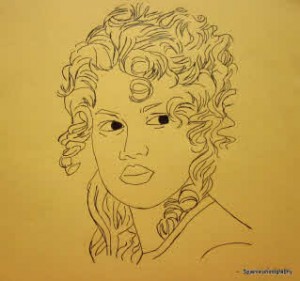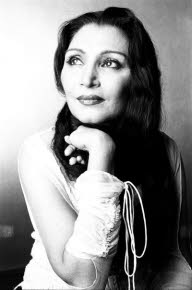by Jenani Srikanth
[box]The urban, middle-class, educated Indian woman is fast becoming the face of the modern Indian woman. But she is still caught in a tussle – of trying to remain rooted in tradition while also making progress that comes with education. There’s perhaps a lesson that the Indian society can learn – of being a little more accommodative. Jenani Srikanth reveals this and more about the modern Indian woman. Text and sketches by Jenani Srikanth.[/box]Few countries have a more pristine record of reverence for women than India. Some four thousand years ago, Indian sages professed their genuine belief in the exalted status of women. Ancient Indian works such as those by grammarians Patanjali and Katyayana suggest that in the early Vedic period, women were educated and enjoyed the freedom and equality that men had.
As centuries passed, distortions in the man-woman relationship started appearing due to a number of reasons, some of which had their origins in the historical and political changes that took place in the country, including the Muslim invasion, the entry of Christianty, and the British rule in India. Then came independence and a constant stream of western influence affecting every aspect of Indian life.
A modern Indian woman is the product of all these changes, especially of those that have taken place during the last 60 years or so.
When we write about modern Indian women, we should be clear that we are characterizing the life and philosophy of a small yet important segment of the Indian society, viz. the urban middle class educated Indian women, excluding an overwhelming number of their counterparts who live in the villages and sharply feel the effects of the patriarchal society.
There are some typical features one can discern in middle class women living in the cities. The most striking among them is the inner conflict, not always conscious, caused by the rather difficult transition from tradition to modernity.
The compulsions of living in an age of science and technology with its attendant culture and values are as powerful as those of the need to preserve and perpetuate the social and moral values of a 4000-year-old tradition. No wonder the need for retention and revivalism is constantly countered by that for change and development! The tension between these opposed instincts is manifest in practically all aspects of a modern woman’s life.
It starts from the time a child is born. In many homes, the desire for a male child is still obsessive and the preference for and care bestowed on him is so pronounced that depending on the totality of circumstances, a girl either becomes timid, subdued and resigned or turns into a rebellious person or a person of defining authority.
The brief interim during which she is in a college or university is sometimes a turning point in her life. She can continue living a rather shriveled life, weak of resolution and anemic in will, prior to being dispatched in marriage, arranged by others and in a number of cases amounting to a virtual sell-out. Just one more case of a callous extinction of a life spark.
Alternatively, she can grow into a playful, independent and relaxed and sometimes even angry young woman prepared to carve out a career and a destiny for herself, even at the risk of displeasing her family and community. This latter type also has to face the gamble of marriage, the outcome of which can make all the difference to her future growth and happiness. It is not uncommon to come across cases where the sheer weight of custom and convention smothers all ambition, turning all youthful resolution of college days into despair.
Only when a woman, having weathered all these storms, emerges triumphant as a married career woman, will she qualify to be called a modern woman in its truest sense. What happens to her is the story of the modern Indian woman. And this is what her life is like: Driven between her domestic duties and the demands of her profession, she starts doing a tight rope-walk. Very often the husband or the in-laws start grudging her forays into the social and professional world outside the home. The frustrations of physical limitations add to the ordeal. Psychological tensions build up until they reach the point of explosion.
Unscrupulous, corrupt and morally-wicked bosses and employers can hasten the end, which is inevitably tragic and painful. Those who escape this predicament and succeed in beating grave handicaps peculiar to women can really count themselves among the lucky few.
In recent times, it’s true that the government has implemented a number of policies in favour of women but unfortunately, the society is still gender biased. Yet what is encouraging is, even amidst these societal barriers, there have been successful women like Kalpana Chawla, Indra Nooyi, Kiran Majumdar Shaw and many other estimable achievers, earning a respectable position in the global arena. Well-educated Indian women today are capable of accomplishing anything. But, gender bias still remains a big challenge that they have to overcome. May we hope that the Indian society becomes more open-minded about their views on the status of women.
[facebook]share[/facebook] [retweet]tweet[/retweet]







